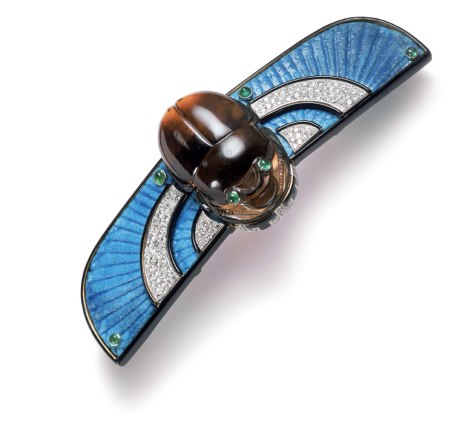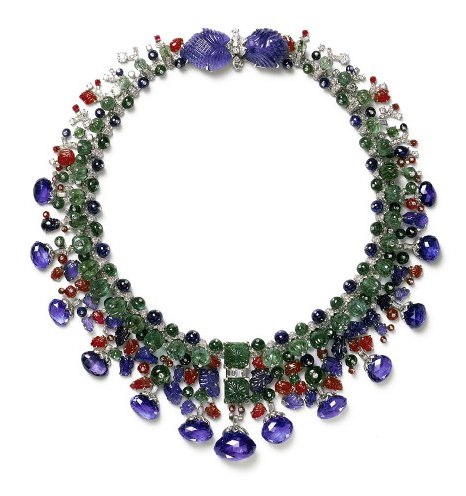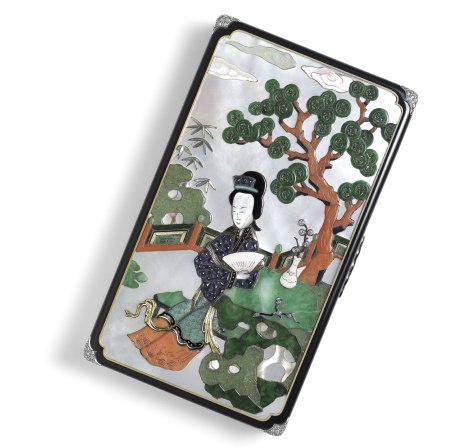The Art of Cartier

Oriental Influences

Louis Cartier had a passion for exotic cultures. While Islamic art truly fascinated him —he had built up a very fine collection of Persian miniatures— Egyptian, Chinese and Indian art were equally influential on Cartier artworks from the beginning of the 1910s.
He had established a remarkable library of reference marks which served as inspiration for the jewellery designs. He also sought out authentic fragments of ancient art which entered the stock as apprêts and were incorporated in jewellery and objects. It was the unusual combination of non-European ancient art and modern mounts that led Cartier to a unique interpretation of 1920s Art Deco pieces.
Egypt
Louis Cartier’s fascination with Egyptian civilisation and its cultural heritage is manifested in his jewels from the 1910s where he incorporated a particularly Egyptian touch. In 1922, Howard Carter’s discovery of the tomb of Tutankhamun brought Egypt back to the centre of artistic attention. Cartier’s Egyptian¬style pieces can be categorised into two distinctive sets: jewels and objects decorated with Egyptian¬style ornamentation, as found in reference works, and those that were embellished with an actual Egyptian antiquity such as a fragment of blue-glazed faïence [fig. 8].
 |
fig. 8. Scarab brooch
- Propiedad
- Cartier London, 1924
Persia – India
In 1911 Jacques Cartier travelled for the first time to India where he witnessed the reverence with which Parisian jewels and watches were treated by the maharajahs. These royals spent lavishly on Cartier pieces and also entrusted their stones to the jeweller so that they could be set in contemporary mounts, usually in platinum. This contact with India also inspired Cartier to design his magnificent Indian¬style parures. Stones carved using ancient Indian gem-cutting techniques opened up new avenues for Cartier. Rubies, sapphires and emeralds were carved into leaves or fluted beads and set into fruit and foliage jewels that became known as the Tutti Fruttipieces. [fig. 9].
 |
fig. 9. Tutti Frutti necklace
- Propiedad
- Cartier Paris, special order, 1936, altered in 1963
The Far East
The Far East is a source of inspiration that led Cartier to create some outstanding works of art. The Art Deco period saw a huge surge in popularity in vanity and cigarette cases. Their varied dimensions gave the designers a great deal of freedom in their creations, as seen in a vanity case depicting a Chinese legend of long-lasting friendship [fig. 10]. Antique jade was a favourite in the jewellery designs, as, for example, in a brooch made from an 18th-or 19th-century Chinese belt clasp.
 |
fig. 10. Chinese Vanity case
- Propiedad
- Cartier Paris, 1928


